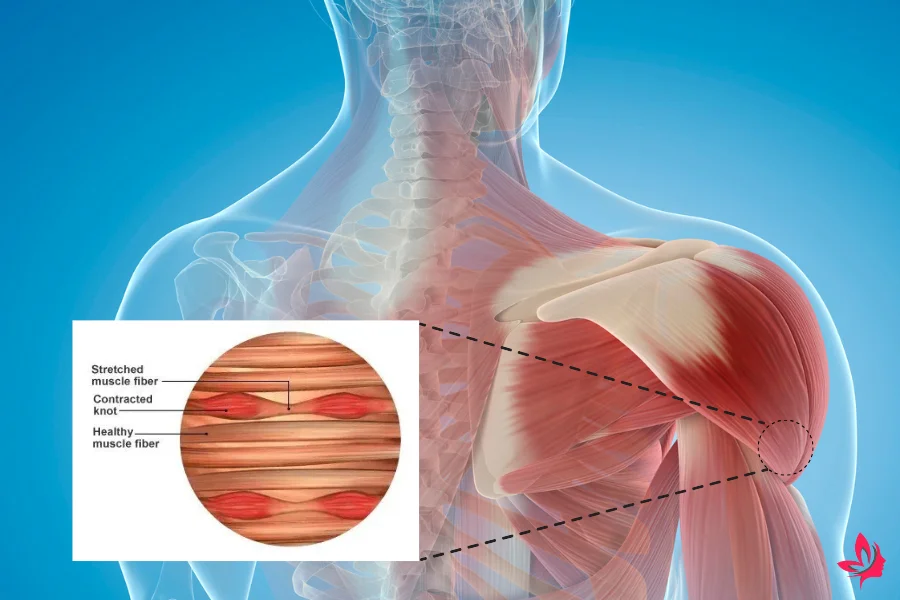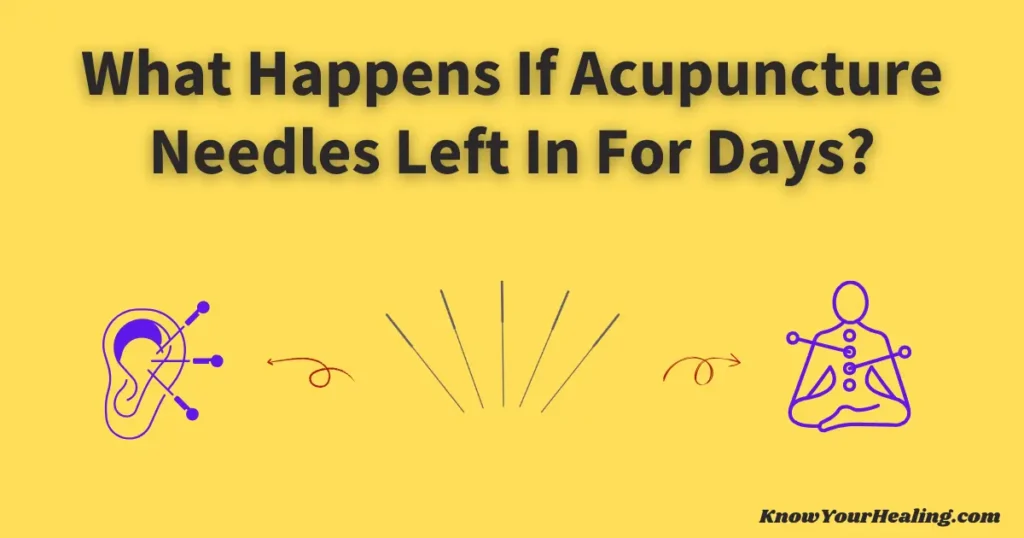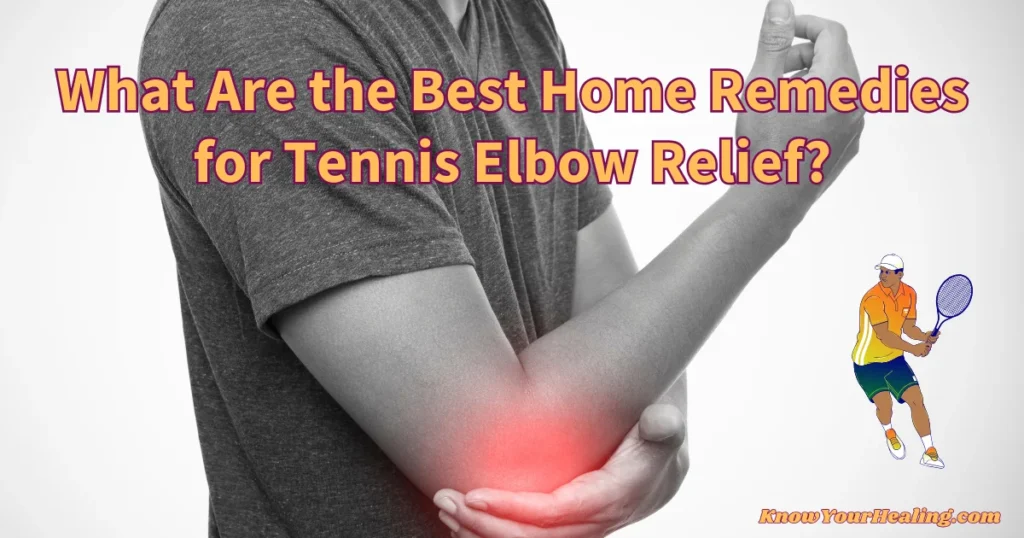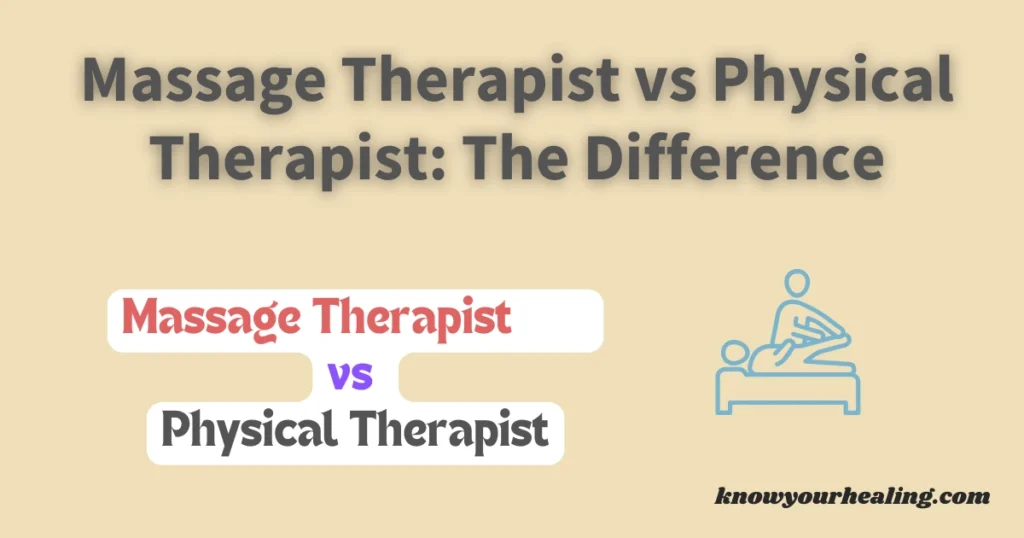Acupuncture for muscle knots is gaining attention from people seeking solutions for stubborn aches and tight spots.
By inserting fine needles into areas where muscle fibers are knotted, acupuncture can trigger natural muscle relaxation and help release deep tension.
This targeted approach provides relief when stretching and massage are insufficient.
Many people wonder how this centuries-old practice works for modern muscle problems.
When needles are placed in trigger points, the body responds with small muscle movements and improved blood flow, which may help loosen tight muscles and lower pain.
Understanding Acupuncture for Muscle Knots and Muscle Tension
Acupuncture for muscle knots uses tiny needles to target muscle fibers and connective tissue involved in pain or muscle tightness.
Repetitive motions and poor posture can lead to painful knots in common areas such as the lower back and shoulders.
What Are Muscle Knots and Myofascial Trigger Points?
Muscle knots, also known as myofascial trigger points, are sensitive, complex areas within muscle tissue.
These points develop when bands of muscle fibers form tight knots due to overuse, injury, or stress.
When touched, active trigger points can cause pain both at the site and in other parts of the body (called referred pain).
This practice is also known as dry needling, which targets these painful points using a thin acupuncture needle.
Both acupuncture and dry needling often lead to pain relief by helping tight muscles relax and increasing blood flow to the affected area.
How Muscle Fibers and Connective Tissue Contribute to Muscle Tightness
Muscle fibers are the individual cells that contract to move the body.
Connective tissue surrounds these fibers and groups of muscle fibers, providing structure and support.
When someone spends a long time in one position or misuses muscles, the muscle fibers and connective tissue can become tight and less flexible.
This process can form tense muscle knots and reduce the range of motion.
When acupuncture needles are inserted into strategic points, they facilitate the release of trigger points.
Increased blood circulation and relaxation of muscle fibers around the needle site encourage regular movement and proper function.
A holistic approach, such as acupuncture, supports the entire musculoskeletal system and may reduce the likelihood of recurring muscle pain.
The Role of Poor Posture and Repetitive Motions in Causing Muscle Tension
Poor posture, such as slouching at a desk or standing with an uneven stance, puts constant strain on specific muscle groups.
Over time, weak muscles and tight bands develop as a result of these habits.
Repetitive motions, such as typing or lifting the same way daily, can overload specific points in the muscle, leading to myofascial pain syndrome or stubborn muscle knots.
Both acupuncture and dry needling can help restore the body’s energy and balance muscle tension.
Combining acupuncture sessions with physical therapy or using a foam roller may provide better pain relief and prevent delayed treatment.
Identifying Painful Areas: Shoulder Blade Knots, Lower Back, and More
Common areas for painful knots include the shoulder blades, lower back, neck, and legs.
These locations are usually under frequent stress due to daily activities or a sedentary lifestyle.
Shoulder blade knots and lower back pain are often reported by people who work long hours at desks or use improper lifting techniques.
Healthcare providers or physical therapists use touch and patient descriptions to identify areas of pain during the initial visit.
Acupuncture treatment targets these specific acupuncture points to address pain and muscle spasms.
If symptoms include numbness or tingling, it may help to rule out nerve damage before starting acupuncture services.
The Root Cause of Chronic Pain and Muscle Spasms in Affected Muscle Groups
Chronic pain and muscle spasms may come from ongoing stress, persistent poor posture, or medical issues like myofascial pain syndrome.
Emotional stress, tension headaches, and nerve irritation also play a role.
Tight muscles in affected muscle groups can result in a limited range of motion and difficulties with daily activities.
Addressing the root cause of muscle knots through acupuncture focuses on improving blood flow and triggering the release of endorphins, which provides natural pain relief.
Using a traditional Chinese medicine practice, acupuncture sessions offer a holistic approach that considers the patient’s overall health, not just the affected muscle.
Treatment plans might also include advice on movement, lifestyle changes, or complementary alternative therapies to help manage or prevent future pain.
The Science Behind Acupuncture Treatment for Muscle Knots

Acupuncture for muscle knots relieves tightness and helps restore proper function by targeting physical symptoms such as muscle tension and blood circulation.
Treatments focus on pain relief and the root cause of muscle pain using techniques accepted by both traditional Chinese medicine and Western medicine.
How Acupuncture Needles Target Specific Points to Release Trigger Points
Acupuncture needles are paper-thin tools strategically inserted into the skin.
These tiny needles allow practitioners to reach myofascial trigger points—areas within the muscle fibers that develop into painful knots.
By focusing on these specific acupuncture points, practitioners can release tension and relieve pain in the affected muscle or muscle group.
Trained healthcare providers with expertise in acupuncture treatment aim to release trigger points in muscles that cause chronic pain, stiffness, or soreness.
Physical therapists often use this method as part of a broader treatment plan, especially for those with a history of muscle tightness from repetitive motions, poor posture, or emotional stress.
Locating and treating the correct points helps decrease muscle spasms and restore range of motion.
Some practitioners combine acupuncture with other treatment options like massage therapy or a foam roller to improve long-term pain relief and muscle function.
Dry Needling vs Traditional Acupuncture: Differences and Benefits
Dry needling and traditional acupuncture both use thin steel needles for musculoskeletal pain, but their techniques and goals differ.
| Feature | Dry Needling | Traditional Acupuncture |
|---|---|---|
| Practitioners | Physical therapists or clinical providers trained in Western medicine | Licensed acupuncturists trained in Eastern medicine principles |
| Focus | Targeted release of active trigger points in muscle tissue | Pain relief, energy imbalances, and broader health issues |
| Primary Conditions Treated | Western medical model focuses on specific muscle dysfunction | Holistic approach addressing the entire body and related health |
| Approach | Balancing the body’s energy flow along meridians | Holistic approach addressing the whole body and related health |
| Benefits | Relief of muscle pain and tightness, improved range of motion | Improved blood circulation, reduced muscle pain, supports nervous system healing |
Both options provide pain relief and increased range of motion, with the choice depending on patient needs and the provider’s training.
Increasing Blood Flow and Blood Circulation to Promote Healing
One primary goal of acupuncture treatment is to enhance blood flow to the affected area, promoting proper function and alleviating muscle tightness.
By stimulating specific points, tiny acupuncture needles cause local blood vessels to dilate, bringing more oxygen and nutrients to the muscle tissue.
Better blood circulation also helps remove waste products from painful areas, speeding up the healing process and lowering inflammation.
This can be especially helpful in treating muscle groups that get sore from a sedentary lifestyle or intense physical activity.
With regular acupuncture sessions, patients often notice improved flexibility and quicker recovery from muscle soreness.
According to experts, acupuncture is considered a natural way to enhance blood circulation.
The Release of Endorphins and Nervous System Response During Acupuncture Sessions
Acupuncture needles not only address muscle knots but also stimulate the nervous system.
This leads to the release of endorphins, the body’s natural painkillers, which alter the perception of pain and bring relief during and after the session.
When endorphins are released, patients may feel less discomfort in both the treated muscle and the referred pain regions.
The nervous system response also involves changes that can lower stress levels and improve mood, supporting a holistic approach to pain relief.
Stimulation of certain nerve fibers may also influence the release of substances like calcitonin gene-related peptide.
These help regulate blood flow and reduce inflammation, supporting the body’s proper function and recovery.
Understanding the Twitch Response and Motor Point Activation in Muscle Tissue
A unique effect of acupuncture for muscle knots is the “twitch response.”
When a needle hits a motor point or active trigger point within the muscle, the muscle fiber may twitch.
This brief contraction is thought to reset the muscle, allowing it to relax and return to its normal length.
Motor point activation breaks the cycle of tight bands within the muscle, helping to restore a healthy range of motion and reduce chronic pain.
This process is particularly beneficial for musculoskeletal pain resulting from repetitive motions or weakness in specific muscle groups.
Physical therapy or acupuncture professionals trained in identifying active and latent trigger points can use the twitch response to gauge the treatment’s success.
Recognizing these muscle movements can be a crucial indicator of effective trigger point therapy, resulting in sustained pain relief throughout the body.
Integrating Acupuncture with Holistic and Physical Therapy Approaches
Acupuncture for muscle knots is most effective when combined with other supportive therapies and self-care practices.
Understanding the various options available helps patients make informed decisions and target the underlying cause of muscle pain and tension.
Combining Acupuncture for Muscle Knots with Physical Therapy and Massage Therapy
Physical therapy and massage therapy are often used together with acupuncture to address tight muscle fibers and promote pain relief.
Physical therapists can utilize manual techniques and guided exercises to enhance range of motion, correct poor posture, and address weak muscles.
Massage therapy helps increase blood flow, relax connective tissue, and reduce muscle tension in the affected area.
When acupuncture needles target myofascial trigger points, these other therapies can help carry the benefits further.
For example, a massage after acupuncture may amplify the release of endorphins and improve circulation.
Physical therapy can help retrain muscles after acupuncture sessions, thereby reducing muscle spasms in the affected area.
This combination is especially beneficial for managing chronic pain and persistent muscle knots.
Using Foam Rollers, Tennis Balls, and Acupressure Mats for Trigger Point Release
Foam rollers and tennis balls are popular tools for self-treatment of musculoskeletal pain. Rolling the affected muscle group can help reduce muscle tightness and promote the release of trigger points.
Foam rolling helps lengthen muscle fibers. This is especially important for individuals with a sedentary lifestyle or those with tight muscle tissue due to repetitive motions or delayed treatment.
Acupressure mats apply pressure to specific points across large parts of the body. This stimulates blood vessels and improves nervous system function.
These tools can support acupuncture treatment between appointments. Using a tennis ball or mat on painful areas, such as shoulder blade knots or the lower back, can mimic some of the benefits of acupuncture by activating pain-relieving pathways.
Work with a healthcare provider to ensure proper technique and safety.
Designing a Treatment Plan: Number of Sessions and Treatment Options
Each person’s treatment plan for muscle pain or myofascial pain syndrome is unique. The number of acupuncture sessions depends on the severity and duration of the muscle knots, the root cause of the pain, and any underlying health issues.
Chronic pain or active trigger points might need more frequent and ongoing treatments, often starting at one to two sessions per week. A typical plan may include acupuncture, dry needling, physical therapy, massage, or stretching.
During the first visit, a qualified provider will assess the affected muscle and discuss treatment options. They will also set realistic goals for recovery.
Providers adjust the number of treatments and the type of therapy based on progress and response.
Benefits of a Holistic Approach: Traditional Chinese Medicine and Western Medicine
A holistic approach combines traditional Chinese medicine practices with Western medical methods. Acupuncture works by targeting specific points that influence blood flow and nervous system activity.
Western treatments primarily focus on the musculoskeletal system, including muscle groups and connective tissue. Combining acupuncture with physical therapy and modern pain management can address emotional stress, tension headaches, underlying inflammation, and muscle function.
Addressing Side Effects, Licensing Requirements, and Choosing Qualified Healthcare Providers
Licensed professionals provide safe acupuncture treatments; however, mild side effects, such as bruising or soreness at the needle site, can occur. Serious risks such as nerve damage or infection are rare but can happen if needles are not sterile or if providers lack proper training.
Always check licensing requirements in your area to confirm providers are certified in acupuncture. Choosing a qualified healthcare provider ensures safe and effective treatment.
Look for experience with musculoskeletal pain, myofascial trigger points, and both eastern and western therapy options. Discuss any health issues or medications to help create a complete, informed treatment plan.
Start with the first visit to set expectations and review the benefits and risks of acupuncture and related therapies.
Frequently Asked Questions
Acupuncture can help with muscle knots by stimulating specific points to release muscle tightness and ease discomfort. Other methods, such as massage, dry needling, and cupping, are also commonly used to relieve muscle tension; however, results and effectiveness may vary.
Can acupuncture break up muscle knots?
Yes, acupuncture can help relieve muscle knots. The treatment utilizes thin needles to target tight areas in the muscle, potentially releasing tension and enhancing blood flow.
Many people notice that their muscles feel more relaxed and less painful after acupuncture sessions.
Can acupuncture loosen tight muscles?
Acupuncture is often used to loosen tight muscles. It encourages gentle muscle release and supports circulation in the affected area.
As muscles relax, people tend to experience better movement and less pain.
How to permanently get rid of muscle knots?
Permanently eliminating muscle knots usually requires a combination of treatments. Acupuncture, regular stretching, improved posture, staying active, and stress management may all help reduce knots.
No single treatment guarantees knots will never return. Preventing tightness can make a big difference.
Which is better, dry needling or acupuncture?
Dry needling and acupuncture both utilize thin needles, but they employ different methods and serve distinct goals. Dry needling targets muscle trigger points, whereas acupuncture focuses on specific points related to the flow of energy.
Some people respond better to one method over the other, depending on their needs.
Should you massage out muscle knots?
Massage can help alleviate discomfort caused by muscle knots. Gentle massage increases blood flow and may release tightness in small areas of muscle.
Deep or aggressive massage can sometimes worsen pain. Use gentle techniques for best results.
What is better, acupuncture or massage?
Both acupuncture and massage can help with muscle knots. Acupuncture targets specific points to facilitate deeper muscle release, while massage works by manually relaxing the affected area.
The best choice depends on the individual’s pain level, preferences, and how their body responds to each treatment.
Why does my knot still hurt after massaging it?
Some muscle knots are very stubborn and may need time or different treatments to heal fully. Ongoing tension, inflammation, or not enough pressure can keep the knot painful after a massage.
Seeking help from a professional may improve results.
Is acupuncture better than cupping?
Both acupuncture and cupping are used for muscle pain. Acupuncture uses needles to trigger specific points, while cupping creates suction to increase blood flow.
There is no single answer for what is best. It depends on the person’s symptoms and response to each therapy.
Do massage guns break up muscle knots?
Massage guns can help ease tightness in some muscles by applying rapid pulses. They may temporarily reduce discomfort, but are not always able to break up deeper muscle knots.
Using a massage gun safely with guidance can help prevent soreness or injury.
Does acupuncture release inflammation?
Acupuncture may reduce muscle tension and inflammation by increasing blood flow. It also calms the nervous system.
Some people report less swelling and discomfort after sessions. Results can vary by individual.




